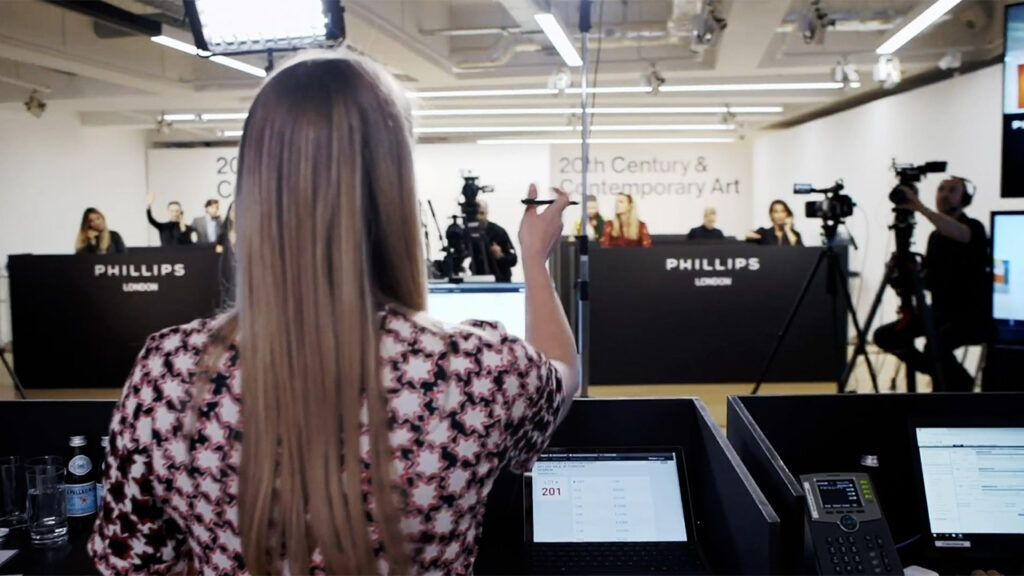From the embrace of cryptocurrency to the hybrid formats of livestreamed auctions, the digital transformations over the past year have irrevocably transformed the art market. As prior constraints of access and physical proximity have fallen away, new pulses and buyers have emerged — most notably for Phillips, exponential growth in day sales and a defining shift towards the Asian art market.
As auction houses continue to traverse the hybridization of the art landscape, a “return to normality” begs the question of tradition vs. innovation. In a recent webinar hosted by ARTNews, Phillips’ CEO Edward Dolman spotlit the trends that dominated art commerce in 2020, while providing fresh insight into how the house “maintains its read on the pulse” of a quickly evolving art market. Here are three key takeaways.
Migration towards the Asian market

REFRESH:RELOAD, Phillips Hong Kong’s first cross-category online auction, targeted modern Asian collectors with its selection of contemporary art, watches, and jewels. Image: Phillips
So who is driving the taste changes in the art market? According to the past year for Phillips, the Asian market, with a strong focus on East Asian regions like Mainland China and Hong Kong. If anything, the pandemic supercharged a shift towards Asia becoming a dominant buying area, with a 30 percent increase in Asian client interaction by Phillips since the start of lockdown last year. The appetite of these Chinese cultural consumers have shaped the house’s sales, notably with Phillips Hong Kong’s REFRESH:RELOAD and INTERSECT cross-category auctions that arrayed contemporary art alongside luxury accessories, reflecting the evolving tastes of modern collectors.
This “large, surprisingly untapped market,” as described by Marion Manekar of Art Media, may very well be the way to success for consignors and sellers looking for new pools of bidders.
Rise of day sales

In 2020, Phillips recorded an overall sales total of $760 million and a 136 percent increase in new online accounts. Image: Phillips
One unexpected result of the Phillips December Sale was an “exponential growth in the lower end of the market,” reports Dolman, in both day sales and New Now auctions (the March edition of which set 20 artist records). In particular, African diaspora, young, historical artists, or some mixture of the above, performed well, pointing to changing tastes in the market.
In keeping up with this “fast-moving growth area,” Dolman describes marketing events in ways that offer much greater accessibility to reach all levels of bidders. For example, a rolling online sale of contemporary art with weekly “drops,” as demonstrated by Phillips’ newly launched Gallery One initiative.
Traditional sales calendars are outdated
The hybrid auction experience — including livestreaming, in-person, or somewhere in between the two — undoubtedly allows for much greater flexibility and range of audience. As a result, sales calendar schedules have loosened, with less categorized and more frequent options provided. For Dolman, these past twelve or so months have demonstrated how little clients really care about timing, especially when the calendar is driven by increasingly irrelevant traditions regarding bank holidays or seasons. Apart from high level sales that require meeting certain market demands and/or times, he does not see traditional sale calendars prevailing far beyond post-pandemic times.
Though the mass migration online has irrevocably altered certain expectations of the art market, there is at least one swing back to tradition that may never find an online equivalent. For Dolman, no matter how sophisticated the digital experience, “there is frankly no substitute for standing in front of a masterpiece and seeing it for what it is.”



